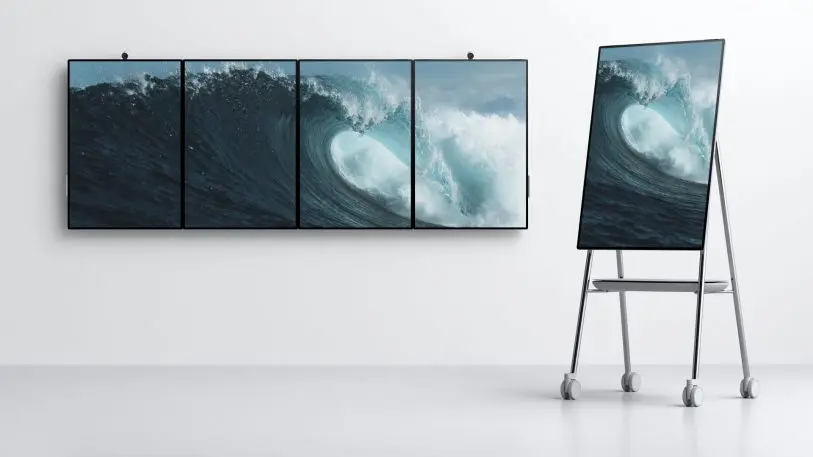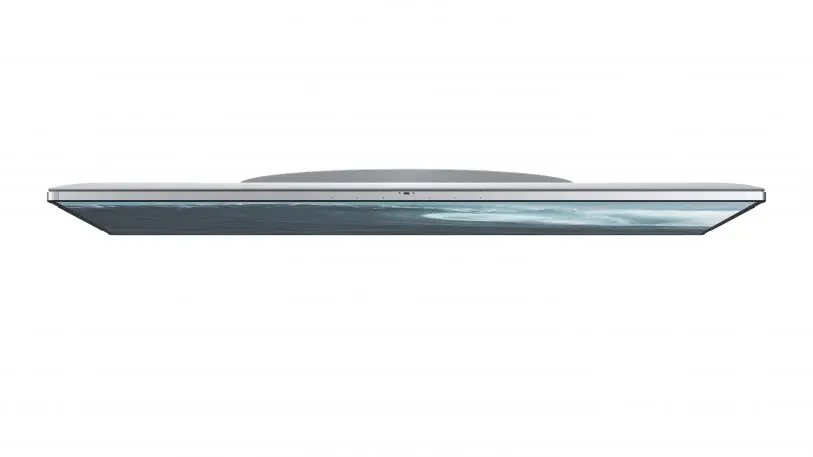Usually, tech companies are too wary of the Osborne Effect to announce new hardware very far in advance. But Microsoft, which confirmed in March that it was working on a second-generation version of its Windows 10-powered Surface Hub smart display for office collaboration and videoconferencing, is following up with more details about the new device, which it plans to start testing in the field later this year and then ship in 2019.
The early heads-up makes sense “so we can start having conversations with enterprise customers,” says Surface Hub general manager of engineering Robin Seiler. “Their purchasing cycles are quite long, especially when it comes to hanging things on their walls.” (So far, Microsoft says, 5,000 companies have bought Surface Hubs, including half the Fortune 500.)
When the Surface Hub 2 comes out, the thing you hang on your wall–or use mounted on a stand–will be a 50-inch screen (with “4K+” resolution in a 3×2 aspect ratio) capable of pivoting by 90 degrees from landscape orientation into portrait mode, making it look less like a flat-panel TV than a digital easel. Microsoft is also reducing the first-generation model’s thick bezel down to as thin a frame as possible. (No, there’s no notch–the videoconferencing camera is now external rather than embedded in the bezel.)
Along with making the device look a bit more like a floating panel of information, the nearly edge-to-edge design and portrait-orientation option allow a new mode in which you can position up to four Surface Hubs right next to each other and treat them as one even more gigantic, panoramic collaborative display. In Microsoft’s Jony Ive-esque video, at least, it’s a neat effect. And it lets several people work together without elbowing each other.


Surface Hub was the brainchild of touch-computing visionary Jeff Han and was originally a poster child for made-in-the-U.S.A. manufacturing. After I did a deep prelaunch dive into the project in 2015, Han left Microsoft and the company shuttered its Oregon plant in favor of outsourced assembly. There’s still a lot Microsoft hasn’t announced about next year’s model–including the price, which Seiler told me will be competitive with rival collaboration/videoconferencing screens from companies such as Google and Cisco–but it’s good to see the vision lives on, and is getting even a little more ambitious.
Recognize your brand’s excellence by applying to this year’s Brands That Matter Awards before the early-rate deadline, May 3.